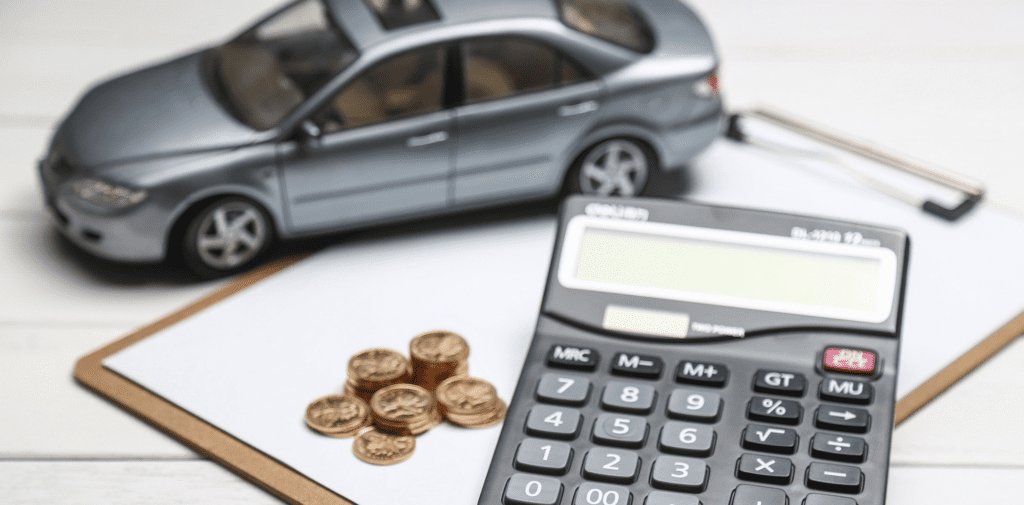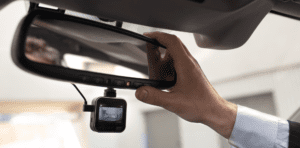Compare cheap car insurance
✔ Compare cheap car insurance quotes
✔ Over 110 insurance providers
✔ Get a quote in minutes
✔ Save up to £504*
When you purchase a new car, it’s crucial not to forget about your insurance. If you buy a new car while your existing insurance policy is active, it’s important to update your cover immediately.
This ensures you’re legally covered when you drive your new car. Let’s walk through the steps for changing the car on your insurance policy.
Can I Transfer My Existing Car Insurance?
Transferring Your Policy
Yes, you can transfer your car insurance from one vehicle to another. This is a common practice among insurance providers. Although a typical car insurance policy is set for a 12-month duration, modifications to the policy can be made at any point during this period.


Process and Considerations
Transferring your insurance is generally a straightforward process. Once completed, your adjusted policy will cover you up to your original renewal date. However, it’s important to note that some administrative fees may apply during this process.
The change in vehicle can influence your premium. Factors such as the make, model, and age of your new car, its safety features, and the likelihood of theft can either increase or decrease your premium.
It’s crucial to inform your insurer about the change as soon as possible to ensure that your cover remains valid and reflects the new vehicle accurately.
Additional Advice
When considering a transfer, it’s advisable to compare the costs and benefits with your current provider against what’s available in the market.
Sometimes, starting a new policy with a different provider might be more beneficial, especially if the new vehicle significantly differs from the old one in terms of value or risk.
Always read the fine print and understand the terms and conditions of your policy before making a decision.
How much can you save on your car insurance?
When Should I Tell My Insurance Provider About Changing My Insurance to a New Car?
Informing Your Provider Before the Purchase
It is essential to inform your insurance provider as soon as you have decided to buy a new car. Provide them with the date when you plan to complete the purchase and start using the vehicle.


The insurance company will then schedule the commencement of your updated policy to align with this date.
On the day you acquire your new car, the cover for it will become active the moment you start driving, while the insurance on your old vehicle will cease.
Dealing with Car Dealerships
If your purchase is from a car dealership, they might offer you temporary car insurance. This short-term cover is designed to provide protection until you arrange a more permanent insurance solution.
However, it’s crucial to confirm whether this temporary cover is available and sufficient for your needs. Without it, you will need to arrange insurance independently to legally drive the new car away from the dealership.
Purchasing from Private Sellers
When buying from a private seller, ensure your insurance is set up before picking up the car. Ideally, organise the insurance transfer at least a day in advance of collecting the vehicle.
If you still possess your old car, keep it insured until you have officially transferred ownership or disposed of it. In this situation, you may need to take out a new policy or a temporary policy for your new vehicle.
Importance of Continuous Cover
Continuous insurance cover is crucial. Never drive the new vehicle without proper insurance in place, as this can lead to legal issues and significant financial risk.
Top Tip: Consider the Impact on Insurance Costs
The car’s specifications, especially its power, can greatly influence your insurance costs. It’s wise to factor this into your budget. To estimate the potential impact on your insurance premium:
- Get a quote from your provider for the specific model you are considering.
- Use comparison tools to evaluate different insurance offers.
- Check the car insurance group of the vehicle using online tools for an indication of how it might affect your premium.
Understanding the likely cost of insurance before finalising your car purchase can help you avoid unexpected expenses and make a more informed decision.
How much can you save on your car insurance?
How Do I Transfer Car Insurance from One Car to Another?
Initiating the Transfer Process
To transfer your car insurance to a new vehicle, contact your insurance provider. This can be done through a phone call or by using their online portal. Communication is key in ensuring a smooth transition of your policy to the new vehicle.


Providing Essential Vehicle Details
Your insurance provider will need detailed information about your new car. This includes the car’s make, model, and registration number. If the vehicle has undergone any modifications, these should also be reported.
When purchasing from a dealership or garage, they usually have this information readily available. If you are buying the car privately, ask the previous owner for these details.
Discussing Policy Adjustments
The insurance company may enquire about other potential changes in your circumstances.
These could include a variation in your annual mileage or a change in where the car is parked overnight (e.g., moving from street parking to a garage). Such factors can influence your insurance cover and premiums.
Understanding the Cost Implications
Once all the necessary information is provided, your insurer can calculate the cost of insuring your new vehicle, considering all the changes.
The premium may increase or decrease based on the new car’s specifications, your updated personal circumstances, and other risk factors.
Additional Points to Consider
- Cancellation Fees: Be aware of any potential cancellation fees if you decide to switch to a different insurer instead of transferring your existing policy.
- Cover Level: Ensure that the level of cover provided by your new policy matches your needs. For instance, if you’re upgrading to a more valuable car, you might want comprehensive cover instead of just third-party.
- No Claims Bonus: Check how transferring to a new vehicle affects your no claims bonus, especially if the new car is significantly different in terms of value or risk profile.
- Policy Terms and Conditions: It’s crucial to review the terms and conditions of your policy during the transfer process to understand any changes or specific clauses that might apply to your new vehicle.
Following these steps will help ensure a seamless transition of your car insurance to your new vehicle.
How much can you save on your car insurance?
Will Switching the Car on My Insurance Affect the Cost?
Factors Influencing Insurance Cost
When you switch the car on your insurance, the cost of your insurance is likely to change. This change can be an increase, a decrease, or it might remain the same.


The determining factor is how your new car compares to the old one in terms of value, power, and other risk-related characteristics.
Impact of Upgrading or Downsizing
- Upgrading Your Vehicle: If your new car is of higher value or is a more powerful model than your previous one, your insurance premium is likely to increase. Higher value cars often come with greater repair costs, and more powerful cars are typically associated with a higher risk of accidents.
- Downsizing to a Smaller Car: Conversely, if you are downsizing to a vehicle with a smaller engine and lower value, your premium might decrease. Smaller cars are often seen as less risky and are cheaper to repair, which can be reflected in lower insurance costs.
Budgeting Considerations
Some motorists intentionally opt for cars with lower horsepower to help manage their budgets. The purchase price and insurance cost of less powerful cars are generally lower. This strategy can be effective for cost-saving, especially when other aspects like fuel efficiency are considered.
Insurance Costs of Older Models
However, it’s important to note that older models might incur higher insurance costs. This is often due to a lack of modern safety features found in newer vehicles. Older cars might also be more susceptible to breakdowns and may require parts that are harder or more expensive to source.
Additional Factors to Consider
- Insurance Group: Different cars fall into different insurance groups based on factors like performance, safety, and repair costs. A higher group generally means a higher premium.
- Security Features: Cars with better security features might attract lower premiums due to reduced risk of theft.
- Location and Usage: Changes in where and how you use the new car can also impact your insurance cost. For instance, a car used primarily in a city might have different insurance costs compared to one used in rural areas.
Key Takeaway
Changing your vehicle can significantly impact your insurance premiums. It’s important to assess not just the vehicle’s purchase price, but also its potential insurance cost before making a decision.
How much can you save on your car insurance?
When your insurance premium increases, you are required to cover the additional cost. This additional payment is typically arranged in the same manner as your original payment method. It could be an upfront lump sum or an increase in your monthly payments.


Understanding how a new car might affect your premiums beforehand is crucial. This awareness allows you to budget accordingly and avoid unexpected financial strain.
Options for Upfront Payers
- Spreading the Extra Cost: If you initially paid for your insurance in full, check with your provider if the additional cost due to the premium increase can be divided over the remaining months of your policy. This approach can ease the financial burden by spreading out payments.
Additional Considerations and Steps
- Reviewing Your Policy: It’s a good opportunity to review your policy to ensure it still meets your needs. Sometimes, certain cover elements might no longer be necessary, or additional ones might be needed.
- Shopping Around: Consider comparing quotes from different insurers. You might find a more competitive rate for the same level of cover, especially if your circumstances or the details of your car have changed significantly.
- Negotiating with Your Provider: Don’t hesitate to discuss with your current insurer. Sometimes, they may offer discounts or adjust your policy to better match your needs and budget.
- Discounts and No Claims Bonus: Check if you’re eligible for any discounts (such as a no claims bonus) which could offset the increase in the premium.
- Payment Options: Explore different payment options. Some insurers offer discounts for annual payments, while others might have more manageable monthly plans.
Remember, an increase in your insurance premium after changing vehicles is a common occurrence. However, by understanding and exploring your options, you can effectively manage the additional costs.
How much can you save on your car insurance?
How Much Does a Car Insurance Transfer Cost?
Understanding Transfer Fees
When transferring your car insurance to a new vehicle, most insurance providers charge an administration fee.
This fee typically ranges between £15 and £25, but it can vary depending on the provider and the specific circumstances of the policy transfer.


Potential for Fee Reductions
- Online Transfers: Some insurers offer a reduced fee or may even waive the administration charge if you complete the policy transfer process online. This can be a cost-effective option, so it’s worth exploring.
- Policy Terms and Conditions: Always check the terms and conditions of your current insurance policy. They provide detailed information about any potential fees associated with policy changes or transfers.
Additional Costs to Consider
- Premium Adjustments: The administration fee is not the only cost associated with transferring car insurance. An increase or decrease in your insurance premium may occur, depending on the specifications of your new vehicle. This change in premium is calculated based on factors such as the car’s make, model, value, and safety features.
- Comparing Providers: If you’re facing a significant increase in costs due to the transfer, it may be beneficial to compare quotes from other insurance providers. Different insurers have varying policies regarding transfer fees and premium calculations, so shopping around can potentially save you money.
- Negotiating with Your Provider: Don’t hesitate to negotiate with your current insurer. Explaining your situation and discussing your options with them might lead to a more favourable arrangement.
- Budgeting for Changes: It’s important to factor in both the administration fee and any potential premium adjustments into your budget when planning to transfer your car insurance. This helps in managing your finances more effectively and avoiding any surprises.
Key Takeaway
The cost of transferring car insurance includes the administration fee set by your insurer and any changes in your premium. Being aware of these costs and exploring options to minimise them can help in making an informed decision.
How much can you save on your car insurance?
Do I Need to Stay with My Insurance Provider When I Change My Car?
Considering a Change of Provider
When you change your car, you are not obliged to stay with your current insurance provider. However, if you are satisfied with their service and find the costs reasonable, remaining with them can be the simplest course of action.


Exploring Other Options
- Seeking Better Deals: If you are unhappy with the new premium quoted by your current provider or believe you can find a more competitive offer elsewhere, it’s certainly worth exploring the possibility of cancelling your current policy and taking out a new one with a different insurer.
- Cancellation Fees: Be aware that cancelling your policy typically incurs a cancellation fee. This fee could potentially be more than the administrative fee for transferring your insurance to a new car within the same company.
Considering No-Claims Discount
- Impact on No-Claims Discount: If you cancel your policy before the end of its 12-month term, you may forfeit the no-claims discount for that year. The no-claims discount is a significant factor in reducing insurance premiums over time, so losing this benefit should be a key consideration.
- Comparing Costs: It’s crucial to compare the cancellation costs against the potential savings from switching to a new insurer. This comparison should include considering the impact on your no-claims discount.
Reviewing Policy Terms
- Policy Terms and Conditions: Always review the terms and conditions of your current insurance policy. This document will outline any fees associated with policy cancellation and provide guidance on the process.
- Understanding Fees: Knowing the exact costs involved in cancelling your policy will help you make a more informed decision about whether to stay with your current provider or switch to a new one.
Key Takeaway
While you are not required to stay with your current insurance provider when changing cars, there are several factors to consider, including potential cancellation fees, the effect on your no-claims discount, and the overall financial implications of switching providers. Carefully evaluating these aspects will help you make the best decision for your situation.
How much can you save on your car insurance?
What Happens If I Forget to Update My Car Insurance?
Consequences of Not Updating Insurance
Failing to update your car insurance when you switch to a different vehicle can lead to serious consequences. If your insurance provider is not informed about the change, your policy may become invalid, which has several implications.


Driving Illegally
- Invalid Cover: Without notifying your insurer about the new vehicle, your insurance cover will not be applicable to it. This situation means you are essentially driving without insurance, which is illegal.
- Risks of Uninsured Driving: Driving without valid insurance exposes you to significant risks. In the event of an accident or if your new car is stolen, you cannot claim on your insurance. This leaves you financially vulnerable to repair costs, replacement costs, or liability claims.
Legal Penalties
- Fines and Points: Being caught driving without valid insurance can result in fines and points on your licence. These penalties can be substantial and have long-term impacts on your driving record and future insurance premiums.
- Vehicle Seizure: In some cases, the police may have the authority to seize your new car if you are found driving it uninsured.
Importance of Timely Updates
- Immediate Notification: It’s crucial to notify your insurance provider as soon as you acquire a new car. Even a short delay can leave you unprotected and legally vulnerable.
- Keeping Records Updated: Always ensure that your insurance records are up to date with the latest vehicle information. This includes make, model, registration number, and any other relevant details.
Additional Considerations
- Insurance Checks: Regularly review your insurance documents to ensure all details are correct. It’s easy to overlook these details in the hustle of acquiring a new vehicle.
- Understanding Policy Terms: Familiarise yourself with the terms of your insurance policy. Some policies might offer a grace period for updating information, but this is not universal.
- Seeking Professional Advice: If unsure about the process or requirements for updating your insurance, seek advice from your insurer or a professional advisor. This can help avoid any misunderstandings or oversights.
Key Takeaway
Forgetting to update your car insurance after changing vehicles can lead to driving illegally, financial risks, and severe legal penalties.
Timely communication with your insurance provider is key to maintaining valid and effective coverage.
How much can you save on your car insurance?
Compare Car Insurance Quotes
The Value of Comparing Quotes
Before proceeding with transferring your insurance to a new vehicle, it’s advisable to compare car insurance quotes. This step provides you with a clearer understanding of the market rates and what you can expect from your current provider.


Preparing for Negotiations
- Informed Discussions: Having knowledge of the prevailing rates in the insurance market can empower you during discussions with your insurance provider. It ensures that you have a benchmark against which to measure their offer.
- Identifying Cost-Effective Options: If your research indicates that your current provider’s rates are higher than average, you’ll be equipped with alternatives. This information can be useful for negotiating better terms or considering a switch to a different insurer.
Utilising Comparison Services
- Ease and Efficiency: Using a comparison service simplifies the process of gathering quotes from various insurers. It’s a time-efficient way to access a range of options without the need to contact each insurer individually.
- Potential Savings: Comparison services can often reveal more cost-effective insurance options. These savings can be significant, especially when considering the long-term costs of car insurance.
- Tailored Options: These services typically allow you to input specific details about your vehicle and driving habits, which helps in finding quotes that are more closely tailored to your individual needs.
Additional Considerations
- Accurate Information: Ensure that the details you provide for comparison quotes are as accurate and up-to-date as possible. This includes information about the vehicle, your driving history, and any other relevant factors.
- Read the Fine Print: Beyond just the cost, pay attention to the cover details and exclusions in the quotes you receive. The cheapest option is not always the best if it compromises on essential cover.
- Regular Reviews: Even after you have transferred your insurance, it’s beneficial to regularly review and compare quotes. Insurance markets can fluctuate, and what was a good deal one year may not be the next.










